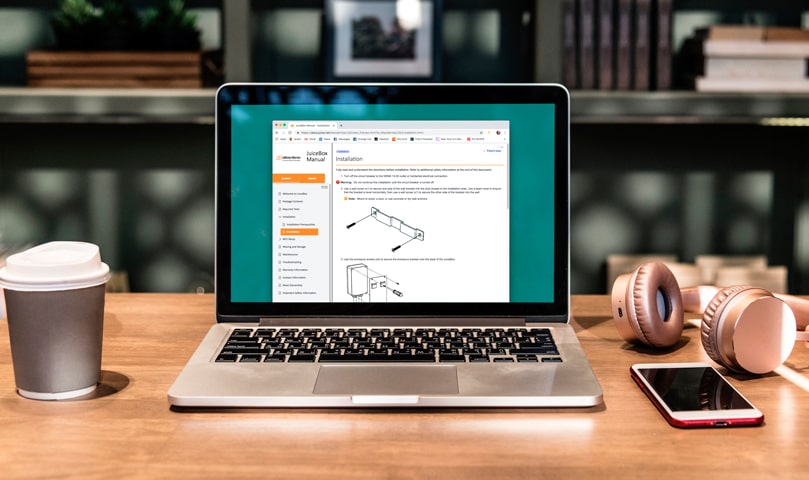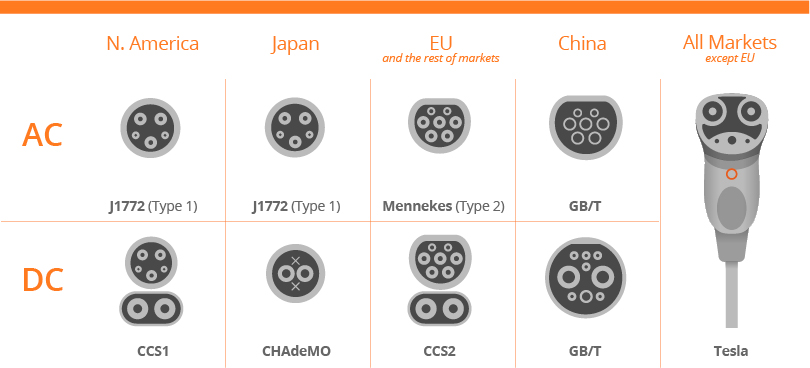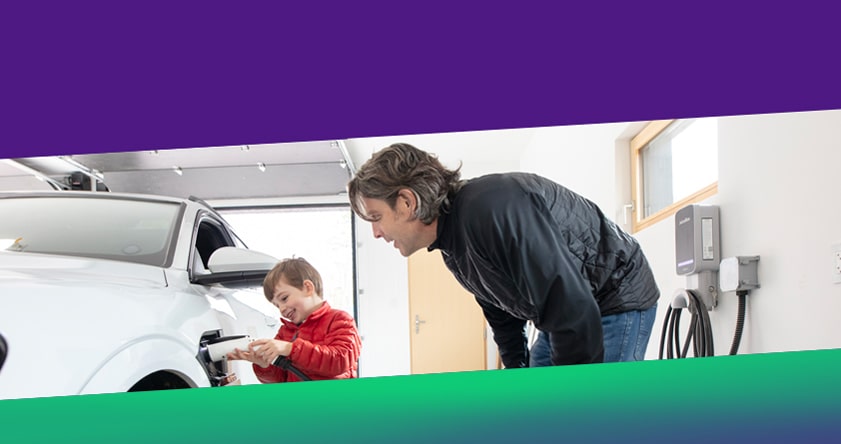Your Ultimate Guide to Charging Electric Vehicles

Electric cars are similar to conventional cars in a lot of ways, but not when it comes to recharging or refueling. Gasoline-powered vehicles only have one place to refuel, and that’s a gas station, while electric cars can be recharged at home, at work and on the go in a number of public places.
Home Charging
The most common place where charging electric vehicles takes place is at home. In fact, studies have shown that home charging accounts for as much as 90% of all electric vehicle charging and there are good incentives that accompany this routine. Home charging allows you to leave home with a full charge every morning, provided your electric vehicle charger can deliver enough power, which varies from level 1 and level 2 charging. You can also save money on charging by using time-of-use electricity plans when available; some utilities even have special EV rates that can save you even more on electricity costs, like Xcel Energy in Minnesota.
Most electric vehicles come standard with a 120-volt level 1 portable charger. These are low-powered units that can fuel an EV at a rate of roughly 3 to 5 miles per hour. If you have a plug-in hybrid (PHEV) or even a battery electric vehicle (BEV) and don’t drive very much the level 1 charger may be all you need. However, most electric vehicle owners find that installing a 240-volt, level 2 charging station at home improves their EV experience. That’s because a JuiceBox level 2 charging station enables you to recharge your EV up to 13 times faster than you can on level 1. It’s important to have a fully charged car that’s ready to go when you need it, and level 2 chargers can assure that’s always the case. Individuals always on the move cannot afford to waste hours on end waiting for their vehicle to charge.
Level 1 Charging Stations
-
Small and portable. The stations usually weigh less than 5 lbs., so it’s easy to transport them. It’s a good idea to keep a level 1 charger in the trunk of your electric car at all times in case you need to fuel up at an unexpected location.
-
Plug into a standard household 120-volt outlet, and are never hardwired.
-
Usually included at no extra charge with the electric vehicle.
Level 2 Charging Stations
-
Larger than level 1 chargers, and can weigh up to 30 lbs. Some level 2 chargers are smaller & lighter than others and can be portable. Our lightweight JuiceBox is only 18 lbs.
-
Some are hardwired, and some are available as plug-in versions. Plug-in units are more desirable because they are easier to install, remove and take to other locations to charge if needed. The JuiceBox Pro 40 plug model uses the same standard plug as a cooking range (NEMA 14-50). JuiceBox installation tips here.
-
Depending on the power amperage, a level 2 charging station can deliver up to 70 miles of range per hour. In case you'/ca/en/re wondering how long does it take to charge an electric car, here is the breakdown of charging points to estimate and increase your car’s battery life:
a. 16 amps = 12 to 15 miles of range per hour
b. 24 amps = 18 to 22 miles of range per hour
c. 32 amps = 25 to 30 miles of range per hour
d. 40 amps = 32 to 35 miles of range per hour
e. 48 amps = 36 to 45 miles of range per hour
f. 80 amps = 65 to 70 miles of range per hour
In North America, all electric vehicles except those made by Tesla use the same EV plug or connector for level 1 and level 2 charging: the J1772 or “J-Plug”. All home charging stations, except those made and sold by Tesla, use the J1772 connector so every electric motor vehicle can use any public level 1 or level 2 charging station that isn’t a Tesla-specific station. Tesla also provides a J1772 adapter with their cars so they can use available charging areas with the J1772 connector.
Workplace Charging
After home charging, workplace charging is the second most common method of charging electric vehicles. Workplace charging is when employers provide EV charging stations for their employees to use when driving to and from work. It’s usually offered free, as an employee perk, but sometimes the employee is required to pay a small fee for the use of the charging station. Workplace charging is especially useful for electric vehicle owners that rely on street parking and don’t have a designated place to park and charge their EV at home.
Most workplace charging stations are level 2 fast chargers, and can fully recharge an EV while employees are at work some employers may ask that employees move their cars from the charging station parking spot once their cars are fully charged. This will grant other co-workers access to the charger before driving back home from work. Moving your EV once you’ve finished charging is actually a good practice to maintain whenever charging at a workplace charger or at a public charging station, since there may be others waiting to use the station once you have finished.
As for connectors, the same rules we outlined above apply for workplace charging, as they do for home charging.
Public Charging
Public charging stations are just what the name implies, EV charging stations that are available to anyone. Studies have shown that public charging accounts for only about 5% of all EV charging. However, when you’re going on a long trip, or if you don’t have the ability to charge regularly at home, you may find yourself needing to use a public charging station. It’s important to know that not every public charging station is available for every EV to use, as there are differences with the plug types for different EV models. The first thing you need to know is what type of connector your electric car uses.

Level 2 Public Charging
With public charging, the same connectors that are used at home and at work are used at commercial charging locations that include retail, parking garage infrastructure, universities, municipalities, hospitals, etc.
Level 3 Public Charging
For DC fast charging, or level 3 charging, there are three types of connectors. The Combined Charging System, or CCS, is the most commonly-used level 3 charging connector. Every electric car sold today in North America with level 3 charging capability uses the CCS connector, except those made by Nissan, Mitsubishi and Tesla.
The second type of connector for level 3 charging is called CHAdeMO. CHAdeMO is currently used on electric motor vehicles made by Nissan and Mitsubishi. Kia had previously used CHAdeMO on the Soul EV, but switched to the CCS connector in 2019.
Just as with level 1 and level 2 charging, Tesla uses its own connector, and also has a proprietary high-speed DC fast charging network, called Superchargers. Only Tesla vehicles can use the Supercharger network because there are no adapters available that enable other electric vehicles to use these Superchargers.
Once you’ve identified what kind of connector your electric car uses for fast charging, you’ll need to find where the most convenient stations are. Many electric cars have the locations of public charging stations pre-loaded in the navigation systems. However, we’ve found that in-car systems are often outdated, so we recommend using a smartphone app like PlugShare or ChargeHub to locate public charging stations. These apps also let you set a filter to only display the charging stations that you can use, based on your electric vehicle’s connector. That way you’ll never pull up to a public charging station, only to find out your car isn’t compatible with the connector on the station.
Most public charging stations are networked (i.e. connected to wifi or Bluetooth), and need to be activated before use. Some public EV charging networks require you to establish an account before using the station, so be sure to check first. There’s usually a phone number on the charging station that you can call to initiate a charging session, even if you’re not a member of the network. The cost of using public charging stations varies greatly. Some level 2 charging stations are free, but some of the high-speed level 3 charging stations can be quite expensive to use. In most cases, public charging costs more than charging at home or at work, because you’re paying for the convenience of public charging, as well as for the cost of the electricity.
We hope this has been helpful in explaining the different ways of charging electric vehicles with renewable energy. For more information, or if you have any questions, visit our website or contact customer service. We’ll be happy to help you with any of your electric car charging needs.



